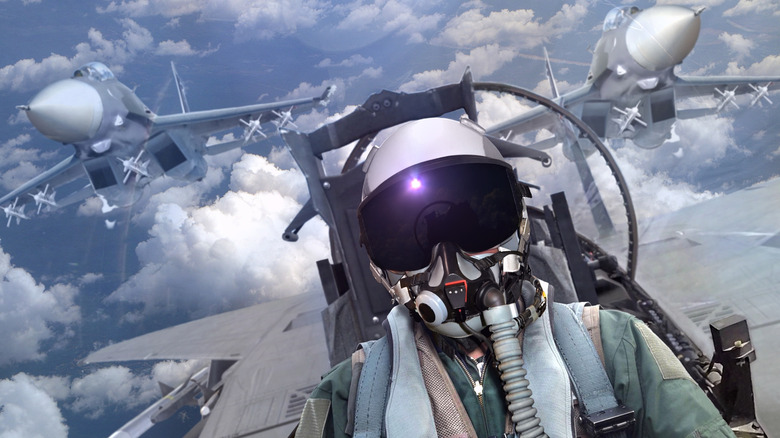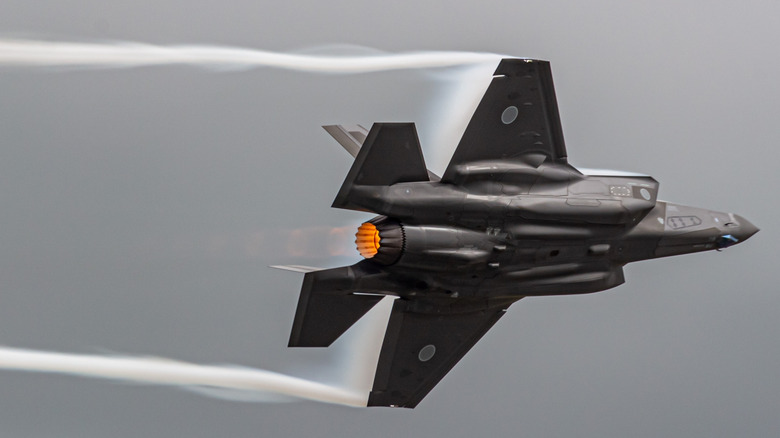How Many Gs Does A Fighter Jet Pull? (And How Much Can A Pilot Handle?)
Fighter jets are known for their incredible speeds, with the fastest jets ever recorded reaching well over 2,000 miles per hour (and the X-15 even hitting 4,500 mph, which is 5.87 times the speed of sound). To reach these speeds — or stop traveling at those speeds — fighter jets pull gravitational force, or g-force. This is the acceleration or deceleration force that the pilot experiences when those changes happen. It's not the speed that causes pilots to faint in flight but the g-force.
Weightless, floating objects are experiencing zero g, and the normal pull of the Earth is 1 g. Fighter jets can reach up to 9 g in a normal flight, although some emergency situations have seen fighter jets reach up to 12 g. For a comparison, the roller coaster with the most g-force is Six Flags Over Texas' Shock Wave, which reaches 5.5 g during its loop (and here are 11 of the most high-tech roller coasters ever built, and where to find them). So is it possible for pilots to withstand 12 g while flying in a fighter jet?
How many Gs can a fighter jet pilot handle?
When a Sopwith Triplane made a tight turn in 1918, its pilot passed out in the first recorded incident of g-force affecting a pilot. Nobody knew what happened back then. It's now known that even split-second lighting speeds such as those of the F-35 take a toll on pilots, with downward g-forces (negative) rushing blood from the head to the lower body and upward g-forces (positive) causing blood to rapidly rise to the head. Lack of blood and oxygen in the brain can cause serious health problems.
The average person can experience up to 5 g, but a fighter pilot can take up to 9 g for a short period — though just 3 negative g. However, if there's an emergency that requires more g-force, pilots can withstand it for a brief duration if they've undergone the right training. In 1954, Col. John Stapp, a U.S. Air Force flight surgeon, was strapped to a rocket sled with 40,000 pounds of thrust and propelled over 3,000 feet in just a few seconds; he experienced 46.2 g without lasting harm.
In training fighter pilots, the U.S. military uses a centrifuge to emulate the g-forces they'd experience in a fighter jet, up to 20 g. In the air, they often wear a "g-suit" that pressurizes parts of the body to get more blood to the brain. Also, some planes have forced-breathing equipment to make it easier for pilots to draw breath.

